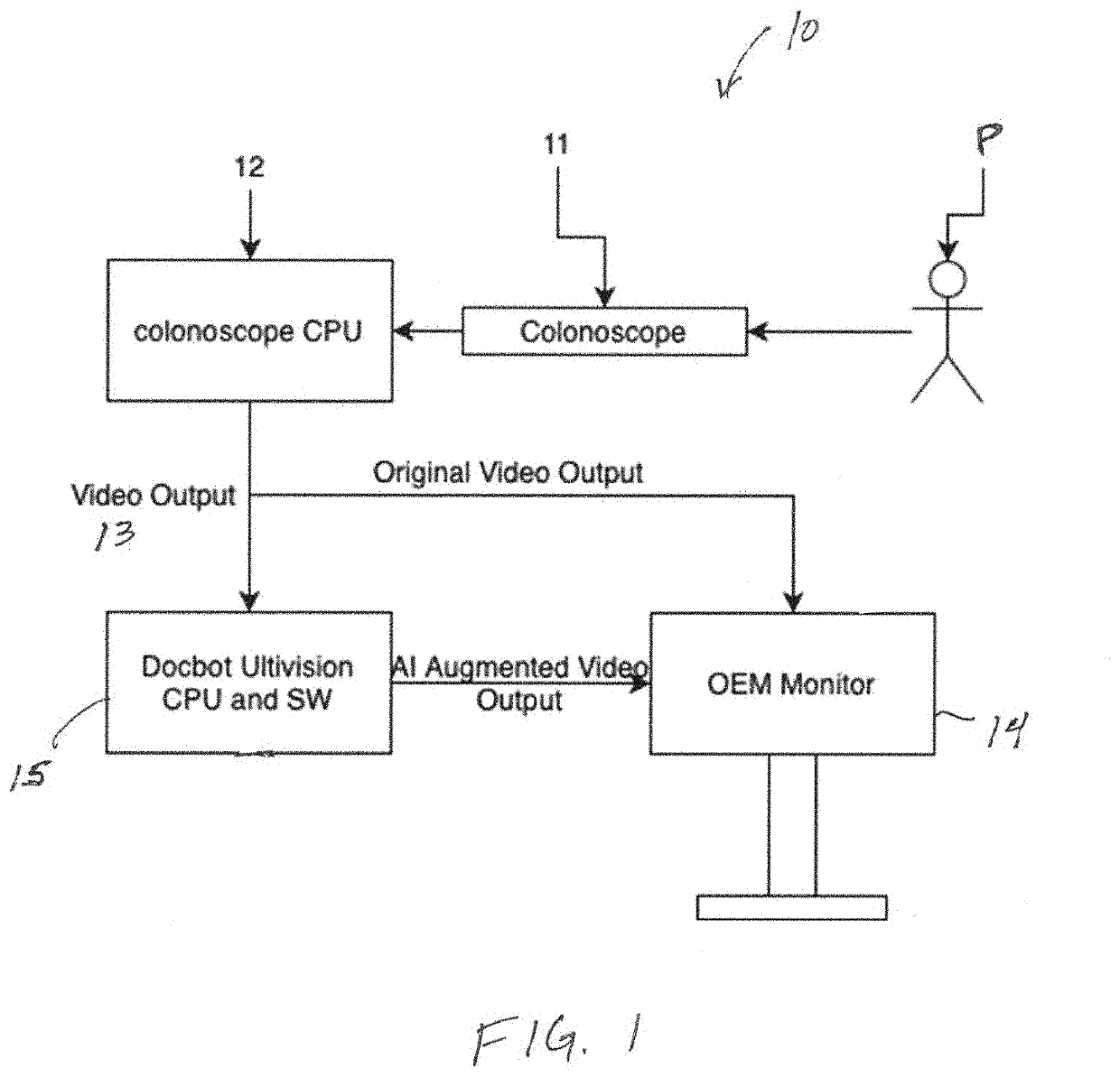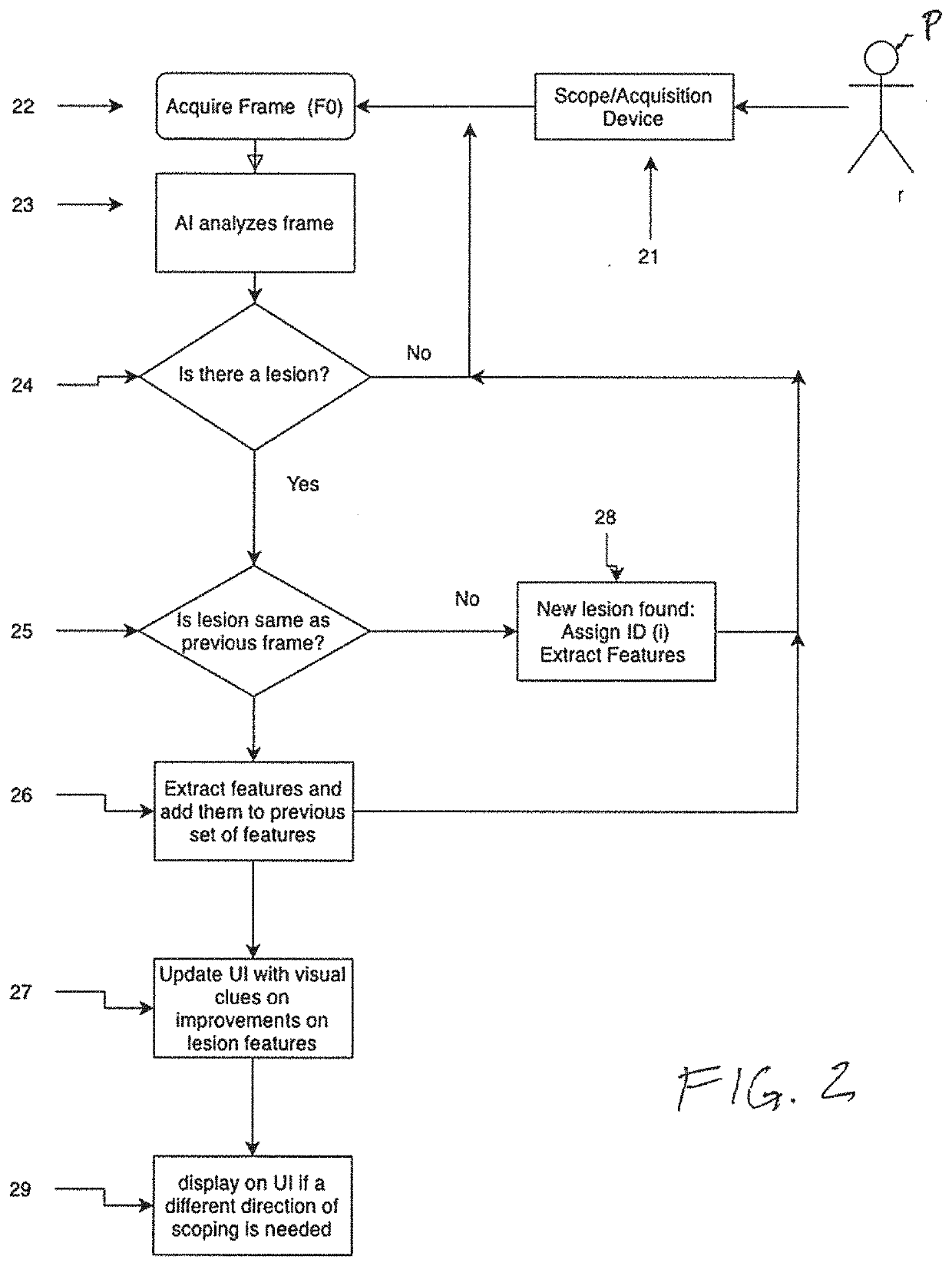System and methods for aggregating features in video frames to improve accuracy of ai detection algorithms
- Summary
- Abstract
- Description
- Claims
- Application Information
AI Technical Summary
Benefits of technology
Problems solved by technology
Method used
Image
Examples
Embodiment Construction
[0036]The present invention is directed to systems and methods for analyzing multiple video frames imaged by an endoscope with an artificial intelligence (“AI”) software module running on a general purpose or purpose-built computer to aggregate information about a potential tissue feature or abnormality, and to indicate to the endoscopist the location and extent of that feature or abnormality on a display viewed by the endoscopist. In accordance with the principles of the present invention, the AI module is programmed to make a preliminary prediction based on initially available information within a video frame, to aggregate additional information for a feature from additional frames, and preferably, to provide guidance to the endoscopist to direct him or her to move the imaging end of the endoscope to gather additional video frames that will enhance the AI module detection prediction.
[0037]Referring to FIG. 1, exemplary colonoscopy system 10 configured in accordance with the princi...
PUM
 Login to View More
Login to View More Abstract
Description
Claims
Application Information
 Login to View More
Login to View More - R&D
- Intellectual Property
- Life Sciences
- Materials
- Tech Scout
- Unparalleled Data Quality
- Higher Quality Content
- 60% Fewer Hallucinations
Browse by: Latest US Patents, China's latest patents, Technical Efficacy Thesaurus, Application Domain, Technology Topic, Popular Technical Reports.
© 2025 PatSnap. All rights reserved.Legal|Privacy policy|Modern Slavery Act Transparency Statement|Sitemap|About US| Contact US: help@patsnap.com



